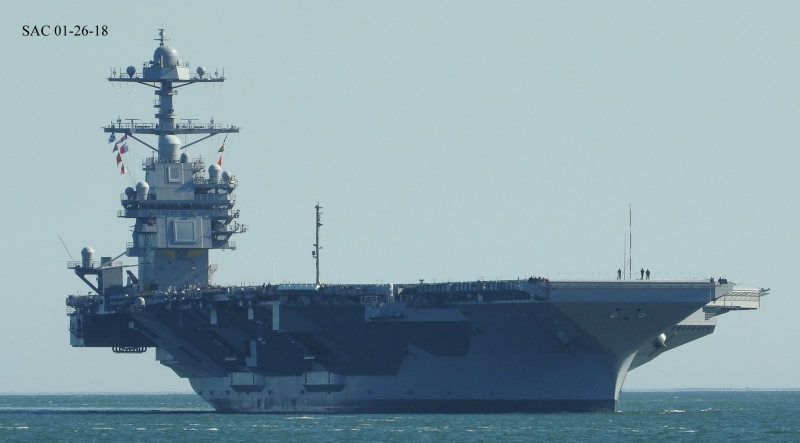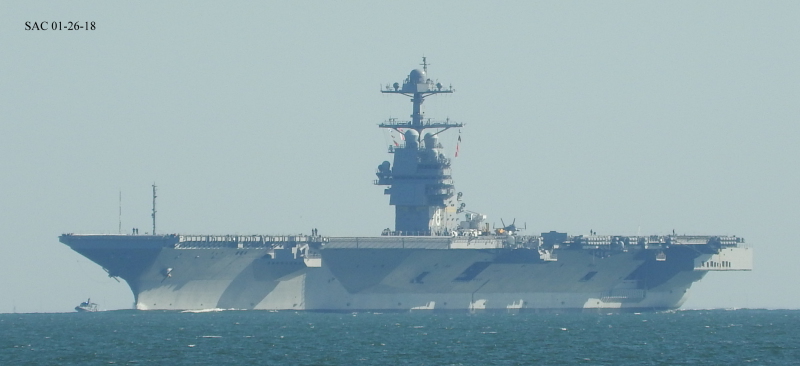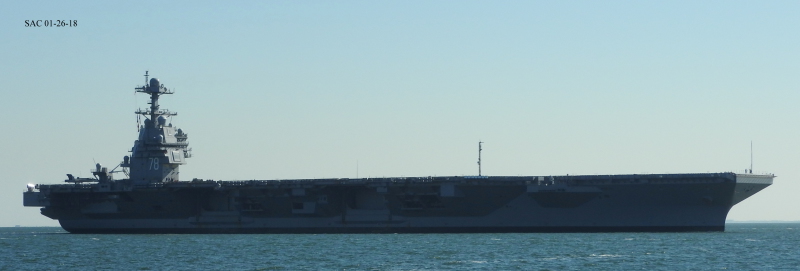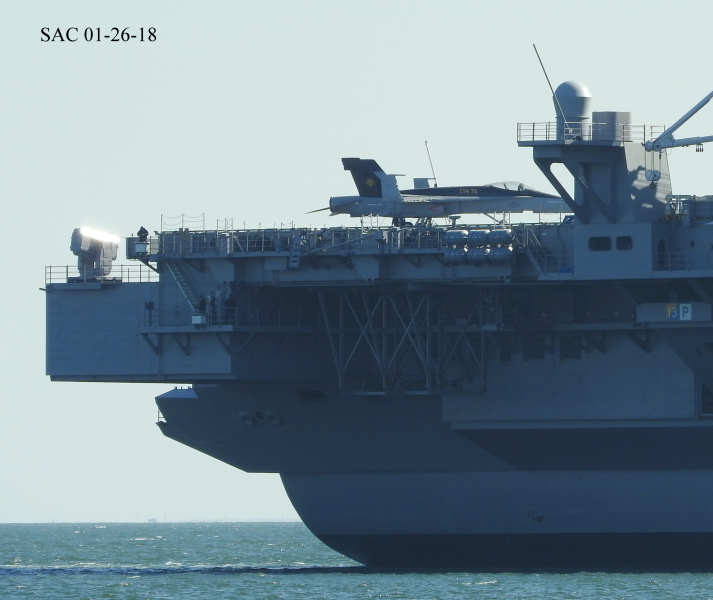You are using an out of date browser. It may not display this or other websites correctly.
You should upgrade or use an alternative browser.
You should upgrade or use an alternative browser.
Aircraft Carriers III
- Thread starter Jeff Head
- Start date
TerraN_EmpirE
Tyrant King
Jeff I am not sure the wings would be able to fold with that configuration.That is one beautiful pic!
How about this?


The Disc would interfere with the tail and when turned the Nacelle would have no room to move. And if it can't fold then IT's an Air force bird.
This Configuration makes a lot of sense not just for a budget friendly Rotary wing AEW but also is very similar to the proposed ISR/C2 palet seen bottom right on this.
 The best configuration though has to be this concept
The best configuration though has to be this concept 
by placing the array on the spine above the axis of pivot The Dish doesn't mess with the Rotors and is at the rough center of gravity for the bird. using a triangular dish that is set inline with the line of the wing and where it sits keeps it clear of the blades. Lockheed Martin back in the Common support Aircraft had thought about a triangular shaped Radom for there CSA 201 concept. Presumably phased arrays would run along the flat sides. The dome would likely also be on jacks so that it could be raised and lowered to match the configuration of the Bird. The larger array would give better range and sensitivity compared to the underslung ball. however without pressurization the crew would need to be on Oxygen.
Right and with "bleed air" from the two turbines, they should be able to achieve some measure of pressurization, without to much trouble!
asif iqbal
Banned Idiot
Gerald Ford is gigantic !
Check the size of the flat deck ! Island is tiny
Check the size of the flat deck ! Island is tiny
TerraN_EmpirE
Tyrant King
They reduced the size of the island. Ford class is only 14 feet longer, 4 feet wider than The last of the Nimitz class
Jura The idiot
General
Today at 12:05 PM
"The reliability concerns are exacerbated by the fact that the crew cannot readily electrically isolate EMALS components during flight operations due to the shared nature of the Energy Storage Groups and Power Conversion Subsystem inverters onboard CVN 78. The process for electrically isolating equipment is time-consuming; spinning down the EMALS motor/generators takes 1.5 hours by itself. The inability to readily electrically isolate equipment precludes EMALS maintenance during flight operations, reducing the system operational availability."
LOL in this thread should I even bother with the link to this?
quoted from page #170, which is page 190 of 394 pages of the document inside Pentagon’s Director, Operational Test & Evaluation 2017 Annual Report
pictures are pretty, the rest appears to be a mess, as in
"The reliability concerns are exacerbated by the fact that the crew cannot readily electrically isolate EMALS components during flight operations due to the shared nature of the Energy Storage Groups and Power Conversion Subsystem inverters onboard CVN 78. The process for electrically isolating equipment is time-consuming; spinning down the EMALS motor/generators takes 1.5 hours by itself. The inability to readily electrically isolate equipment precludes EMALS maintenance during flight operations, reducing the system operational availability."
LOL in this thread should I even bother with the link to this?
quoted from page #170, which is page 190 of 394 pages of the document inside Pentagon’s Director, Operational Test & Evaluation 2017 Annual Report
Thy would bnot be able to folkd in that manner with that onfoiguration unless of course th domw was also nade to fold up and back.Jeff I am not sure the wings would be able to fold with that configuration. View attachment 45314
The Disc would interfere with the tail and when turned the Nacelle would have no room to move. And if it can't fold then IT's an Air force bird.
This Configuration makes a lot of sense not just for a budget friendly Rotary wing AEW but also is very similar to the proposed ISR/C2 palet seen bottom right on this.View attachment 45316 The best configuration though has to be this concept View attachment 45317
by placing the array on the spine above the axis of pivot The Dish doesn't mess with the Rotors and is at the rough center of gravity for the bird. using a triangular dish that is set inline with the line of the wing and where it sits keeps it clear of the blades. Lockheed Martin back in the Common support Aircraft had thought about a triangular shaped Radom for there CSA 201 concept. Presumably phased arrays would run along the flat sides. The dome would likely also be on jacks so that it could be raised and lowered to match the configuration of the Bird. The larger array would give better range and sensitivity compared to the underslung ball. however without pressurization the crew would need to be on Oxygen.
The mai config considered in the oast has been this one:
But I believe that is inferior to the larger dome which could be configured like the E-2D, perhaps scaled down just a bit.
The thing is, the V-22 is rying out for an AEW version...mpt t mention an ASW version.
The arguments against EMALS for that perspective are misleading at best.Today at 12:05 PM
pictures are pretty, the rest appears to be a mess, as in
"The reliability concerns are exacerbated by the fact that the crew cannot readily electrically isolate EMALS components during flight operations due to the shared nature of the Energy Storage Groups and Power Conversion Subsystem inverters onboard CVN 78. The process for electrically isolating equipment is time-consuming; spinning down the EMALS motor/generators takes 1.5 hours by itself. The inability to readily electrically isolate equipment precludes EMALS maintenance during flight operations, reducing the system operational availability."
LOL in this thread should I even bother with the link to this?
quoted from page #170, which is page 190 of 394 pages of the document inside Pentagon’s Director, Operational Test & Evaluation 2017 Annual Report
There are four EMALS. Each operates in such a way to be able to be isolated from the other three.
Anyhow, as I have said in the past...many times...people with little to no experience about carriers and their operations...and little to no experience or knowledge of how EMALS was designed for the Ford class, find the slightest issue and make a mountain out of mole hill.
The US Navy knows what it is doing and the Ford is a brand new class that has a lot of policies and procedures to not just be written but to be developed.
They are in the process of doing that.
Before all is said and done, like the F-35, the Ford class is going to come out not only squeaky clean, but it will come out being a huge innovation to supercarrierss and like the Nimitz class, set the stage and the ideal for evey other country that will ever consider CATOBAR carriers...few if any will ever be able to touch what those carriers are going to be able to do. In fact I doubt seriously that any one ellse ever will.
@bd popeye @FORBIN @Obi Wan Russell @Air Force Brat ...FYI
Last edited:
The arguments against EMALS for that perspective are misleading at best.
There are four EMALS. Each operates in such a way to be able to be isolated from the other three.
Anyhow, as I have said in the past...many times...people with little to no experience about carriers and their operations...and ittle to no experience or knowledge of how EMALS was designed for the Ford class, find the slightest issue and make a mountaain out of mole hill.
The US Navy knows what it is doing and the Ford is brand new class that has a lot of policies and procedures to not just be weereitten but to be developed.
They are in the procee of doing that.
Before all is saod and done, like the F-35, the Ford class is going to come uput not only squeaky clean, but it will come out being a huge innovation to super carriers and like the Nimitz class, set the stage and the ideal for evey other country that will ever consider CATOBAR carriers...few if any will ever be able to touch what those carriers are going to be able to do. In fact I doubt seriously that any one ellse ever will.
@bd popeye @FORBIN @Obi Wan Russell @Air Force Brat ...FYI
I absolutely agree Jeff,,, while the Pentagon's new DOTE will be trying to make a name for himself as a "gunslinger", he will more than likely end up like the last one, as "naysayer in Chief", or "Chief of Negativity", anyway, after 8 years of "starvation" under the Obama regime, the military deserves to have an infusion of cashola to at least bring our "blood level" back to the land of the living!
Mr. Obama's many, many, lies and deceptions are continuing to come to light, but I can promise you, the United States Military is thankful to be back under the "watchcare" of someone who really "does care"... the Commander in Chief is taking names, and bringing healthy corporate change, to the military, to healthcare, to our economy, but more importantly to our National Psyche!
God Bless the USA, our citizens, our friends and allies, and God Bless Donald J. Trump, President of the "UNITED STATES"!
I'm very thankful to see our "Friends in the Kingdom", floating their own new Aircraft Carriers, and I'm very proud that they have chosen the Lockheed Martin F-35 to "fly topcover!", over those equally magnificent and capable vessels!
Update:
From Navy News this morning: A good narrative about the heavy weather conditions experienced transiting across Biscay (What a surprise!). Includes a great pic of the Chinook going down to hangar level on one of the large aircraft lifts. Shows how tight it all was (as expected) - but achievable nonetheless. Here is the NN transcript:
Pictures: PO(Phot) Dave Jenkins
For the first time ever a giant RAF Chinook helicopter has been stowed (fully bladed) in the hangar of a British aircraft carrier.
With the nose protruding over the edge of one of HMS Queen Elizabeth’s two mighty aircraft lifts, the 99ft-long helicopter from RAF 27 Squadron was moved from the flight to the hangar deck.
So large are the lifts and hangar spaces on the new Portsmouth-based warship that there’s no need even to fold the rotors. (Admin note: RAF Chinook rotors do not fold).
There ZH902 – a special trials variant of the Chinook – was joined by a second wocca-wocca, and two Merlins, all from the Aircraft Test and Evaluation Centre (ATEC) at MOD Boscombe Down, and a couple of Merlin Mk2s from 820 Naval Air Squadron as well as the 2 845NAS Merlin Mk3s aboard too making 8.
All six helicopters are on board Queen Elizabeth for trials, finding out what the operating parameters are of the airframes flying from the carrier at sea.
They were transferred to the hangar in advance of rough weather as the 65,000-tonne warship – the largest vessel ever built for the Royal Navy – made her way towards Gibraltar, keeping the helicopters out of harm’s way of the elements.
The painstaking process to bring the Chinooks in for the very first time took almost two hours, with the nosecone hanging precariously over the aircraft lift (powerful enough to raise or lower two F-35B Lightning II jets or half the 700-strong ship’s company). With practice it will take a fraction of that time.
“Even though HMS Queen Elizabeth is the biggest ship the Royal Navy has operated, she still moves around in the seas especially with the swell and winds in the infamous Bay of Biscay,” explained Cdr David Scopes, head of the carrier’s air engineering department.
“We have very precious aircraft on board at the minute, packed with special equipment to take the readings we need during our flying trials, so we have to look after them.
“As well as our non-slip decks, the aircraft brakes are supplemented by chocks on the wheels and the use of lashings between strong points on the aircraft and the deck, in carefully-calculated patterns to make sure they don’t move around and get damaged. We do this to all equipment in the hangar as we don’t want any of that being loose and hitting the aircraft either.”
The ship has faced her toughest conditions yet, transiting through the notoriously stormy conditions of the Bay of Biscay.
The feared waters whipped up to a Sea State 7 as the 65,000-tonne ship cut through, with waves of six to nine metres or more at times. The transit was watched carefully inside the ship by engineers and ship’s company to see how she handled.
“These conditions are useful for us to see how the ship handles, and to see if there are any structural issues,” said Scott Maclaren, Senior Sea Trials Manager.
“We look at whether things still work as they did before, also, how does it affect the crew? Bad weather can cause seasickness and fatigue, so we’re looking at how the human factor might be impacted. She’s a big ship though and doesn’t actually move too much. Her stability will only increase as more personnel and equipment is embarked”.
The man the command team looks to for guidance on incoming weather is Lt Matt Williams, the carrier’s Hydrographical and Meteorological Officer. The vital information his department provides shapes the ship’s programme. Speaking as the weather rolled in, he said:
“We don’t yet know what impact the conditions will have on the ship, but we do know that this sort of weather affects such things as flying and sea boat serials. We need to keep those serials, our people and equipment safe, so it’s important to know what weather is inbound. Seas like these can make manoeuvring a big ship like this very difficult, so we will be keeping a close eye on things”.
HMS Queen Elizabeth is due to make her debut in Gibraltar – her first overseas port of call – tomorrow morning.



From Navy News this morning: A good narrative about the heavy weather conditions experienced transiting across Biscay (What a surprise!). Includes a great pic of the Chinook going down to hangar level on one of the large aircraft lifts. Shows how tight it all was (as expected) - but achievable nonetheless. Here is the NN transcript:
Pictures: PO(Phot) Dave Jenkins
For the first time ever a giant RAF Chinook helicopter has been stowed (fully bladed) in the hangar of a British aircraft carrier.
With the nose protruding over the edge of one of HMS Queen Elizabeth’s two mighty aircraft lifts, the 99ft-long helicopter from RAF 27 Squadron was moved from the flight to the hangar deck.
So large are the lifts and hangar spaces on the new Portsmouth-based warship that there’s no need even to fold the rotors. (Admin note: RAF Chinook rotors do not fold).
There ZH902 – a special trials variant of the Chinook – was joined by a second wocca-wocca, and two Merlins, all from the Aircraft Test and Evaluation Centre (ATEC) at MOD Boscombe Down, and a couple of Merlin Mk2s from 820 Naval Air Squadron as well as the 2 845NAS Merlin Mk3s aboard too making 8.
All six helicopters are on board Queen Elizabeth for trials, finding out what the operating parameters are of the airframes flying from the carrier at sea.
They were transferred to the hangar in advance of rough weather as the 65,000-tonne warship – the largest vessel ever built for the Royal Navy – made her way towards Gibraltar, keeping the helicopters out of harm’s way of the elements.
The painstaking process to bring the Chinooks in for the very first time took almost two hours, with the nosecone hanging precariously over the aircraft lift (powerful enough to raise or lower two F-35B Lightning II jets or half the 700-strong ship’s company). With practice it will take a fraction of that time.
“Even though HMS Queen Elizabeth is the biggest ship the Royal Navy has operated, she still moves around in the seas especially with the swell and winds in the infamous Bay of Biscay,” explained Cdr David Scopes, head of the carrier’s air engineering department.
“We have very precious aircraft on board at the minute, packed with special equipment to take the readings we need during our flying trials, so we have to look after them.
“As well as our non-slip decks, the aircraft brakes are supplemented by chocks on the wheels and the use of lashings between strong points on the aircraft and the deck, in carefully-calculated patterns to make sure they don’t move around and get damaged. We do this to all equipment in the hangar as we don’t want any of that being loose and hitting the aircraft either.”
The ship has faced her toughest conditions yet, transiting through the notoriously stormy conditions of the Bay of Biscay.
The feared waters whipped up to a Sea State 7 as the 65,000-tonne ship cut through, with waves of six to nine metres or more at times. The transit was watched carefully inside the ship by engineers and ship’s company to see how she handled.
“These conditions are useful for us to see how the ship handles, and to see if there are any structural issues,” said Scott Maclaren, Senior Sea Trials Manager.
“We look at whether things still work as they did before, also, how does it affect the crew? Bad weather can cause seasickness and fatigue, so we’re looking at how the human factor might be impacted. She’s a big ship though and doesn’t actually move too much. Her stability will only increase as more personnel and equipment is embarked”.
The man the command team looks to for guidance on incoming weather is Lt Matt Williams, the carrier’s Hydrographical and Meteorological Officer. The vital information his department provides shapes the ship’s programme. Speaking as the weather rolled in, he said:
“We don’t yet know what impact the conditions will have on the ship, but we do know that this sort of weather affects such things as flying and sea boat serials. We need to keep those serials, our people and equipment safe, so it’s important to know what weather is inbound. Seas like these can make manoeuvring a big ship like this very difficult, so we will be keeping a close eye on things”.
HMS Queen Elizabeth is due to make her debut in Gibraltar – her first overseas port of call – tomorrow morning.









